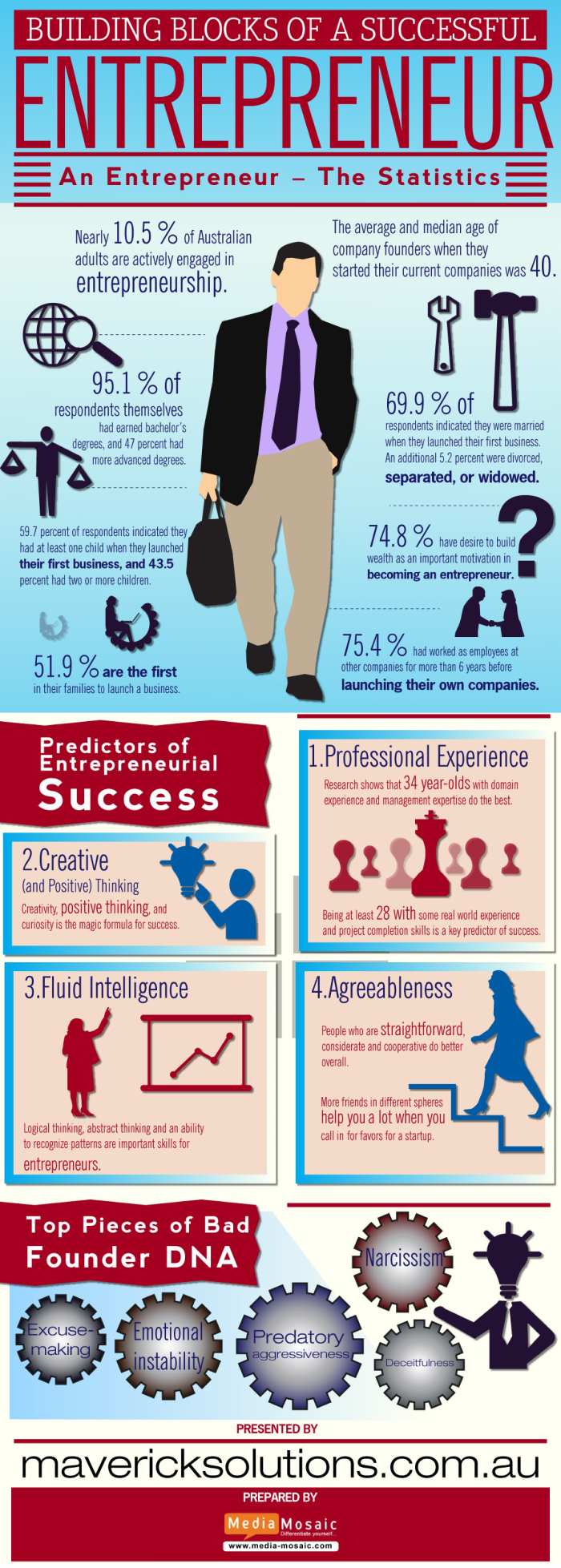Do you have what it takes to be an entrepreneur? Well, there seems to be a lot of confusion when it comes to the who, when, what, why, and how of people successfully (and unsuccessfully) starting their own businesses.
With all the inflated and often contradictory information going around, I decided to do a little research to see if I could find some telling statistics that would shed some light on the true state of entrepreneurship today.
Success in Entrepreneurship is Hard to Come By
According to a recent Harvard Business School study, Performance Persistence in Entrepreneurship, a venture-capital-backed entrepreneur who succeeds in a venture has a 30% chance of succeeding in his next venture. But, first-time entrepreneurs have even less of a chance for success, with only 18% being able to successfully start a viable business. Entrepreneurs who failed the first time have a 20% chance of succeeding with the next startup.
According to The Startup Owner's Manual: The Step-By-Step for Building a Great Company by Steve Blank and Bob Dorf, a whopping 90% of new products will ultimately fail.
Data from the U.S. Small Business Administration shows that regardless of the year when they are founded, the majority of start-ups go out of business within five years, and two-thirds are no longer operating ten years after being formed. Everyone quotes the SBA's startup failure rate statistics, but no one seems to have the actual link where they say this. So, here it is.
Just Who is Starting Businesses Anyway?
According to the most recent Kauffman Index of Entrepreneurial Activity, a mere 0.32 percent of American adults created a business per month in 2011, and contrary to popular belief, a large percentage of this group consists of older, mostly male Americans. Since 1996, Americans between the ages of 55 and 64 have had a higher rate of entrepreneurial activity than those aged 20-34, and men have been starting companies at twice the rate of women.
Also notable is where this new businesses are sprouting up. By industry, construction had the highest entrepreneurial activity rate at 1.68 percent, followed by the services industry at 0.42 percent. The manufacturing startup rate was the lowest among all industries, with only 0.11 percent of non-business owners starting businesses per month during 2011. Among the United States' 15 largest metropolitan statistical areas, Los Angeles had the highest entrepreneurial rate (580 per 100,000 adults) in 2011. Chicago and Detroit had the lowest rates at 180 per 100,000 adults.

![A Snap Shot of Entrepreneurship Today [Infographic]](https://frugalentrepreneur.com/wp-content/uploads/2012/10/building-blocks-of-a-successful-entrepreneur_header.jpg)